Museums of Paris
Introduction
Paris is a city of museums. There are over 150 museums in Paris, including some of the most-visited in the world. As a visitor, the real challenge is choosing the proper museums for you that match your interests, needs, and time. Right now, we will concentrate on the biggest and the best. Renowned for her cultural contributions to the world, the city hosts hundreds of them, from the world-class artifacts of the Louvre to the priceless artworks of the Musée d’Orsay. Paris is very popular, and so are its museums. You will likely encounter long ticket line-ups at the top museums. To avoid these long queues, you can purchase your e-tickets here.
Louvre Museum
The Louvre Museum opened in 1793. It featured the French monarch’s art collection and the result of the pillaging during Napoleon’s Empire. Since its inauguration, the museum was free for the public a few days a week and was considered revolutionary for its time.
The building
The Louvre Palace houses the largest museum in the world. The twelfth-century fortress was extended and refurbished several times throughout the centuries. Before it opened as a museum, King Charles V and Philippe II chose this palace as their residence, decorating it with their ever-growing art collections. When the Royal Family moved to Versailles, the impressive building that covers 160,000 square meters was transformed into one of the most important museums in the world. A glass pyramid, which is currently the museum’s principle entrance, was built in the palace’s central courtyard in 1989, piercing the monotony of the Louvre’s exterior.
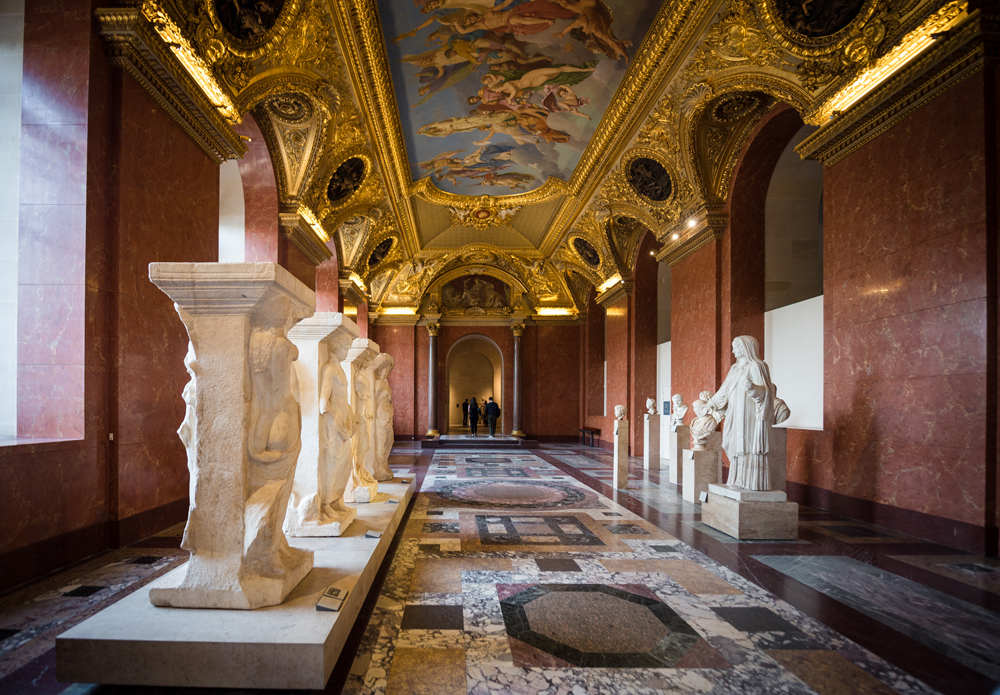
The exhibitions
The Louvre’s permanent collection features nearly 300,000 works of art before 1948, of which only 35,000 are visible to the public. The enormous collection is organized by themes in various departments: an Oriental Antiquities department, Egyptian Antiquities department, Greek Antiquities department, and Roman and Etruscan departments. The museum also includes a part of the history of the actual palace, including the Louvre during the Middle Ages, Islamic art, paintings, sculptures, and graphic art.
These are some of the most impressive paintings on display:
- The Mona Lisa by Leonardo da Vinci
- Liberty Leading the People by Eugène Delacroix
- The Wedding at Cana by Paolo Veronese
The most famous sculptures are:
- Venus de Milo is an ancient Greek statue.
- Seated Scribe, an ancient Egyptian sculpture.
- Winged Victory of Samothrace, a Hellenistic sculpture
One of the most visited museums worldwide
Due to the museum’s sheer size, visitors will need a whole morning to get a general idea of the Louvre and see the most important paintings, sculptures, and other types of art. The Louvre is so vast that one could easily spend several days exploring its exhibitions. If you’re an art lover and want a deeper understanding of the artwork in the Louvre, the museum offers guests an audio guide with information on every piece in the gallery. You can download it as an app for mobile Nintendo 3DS. Although the Louvre Museum is extremely prestigious worldwide, the visit can become tedious for those who are not passionate about art due to the museum’s dimensions, the heat, and the crowds of people.
Musée d’Orsay
The Building
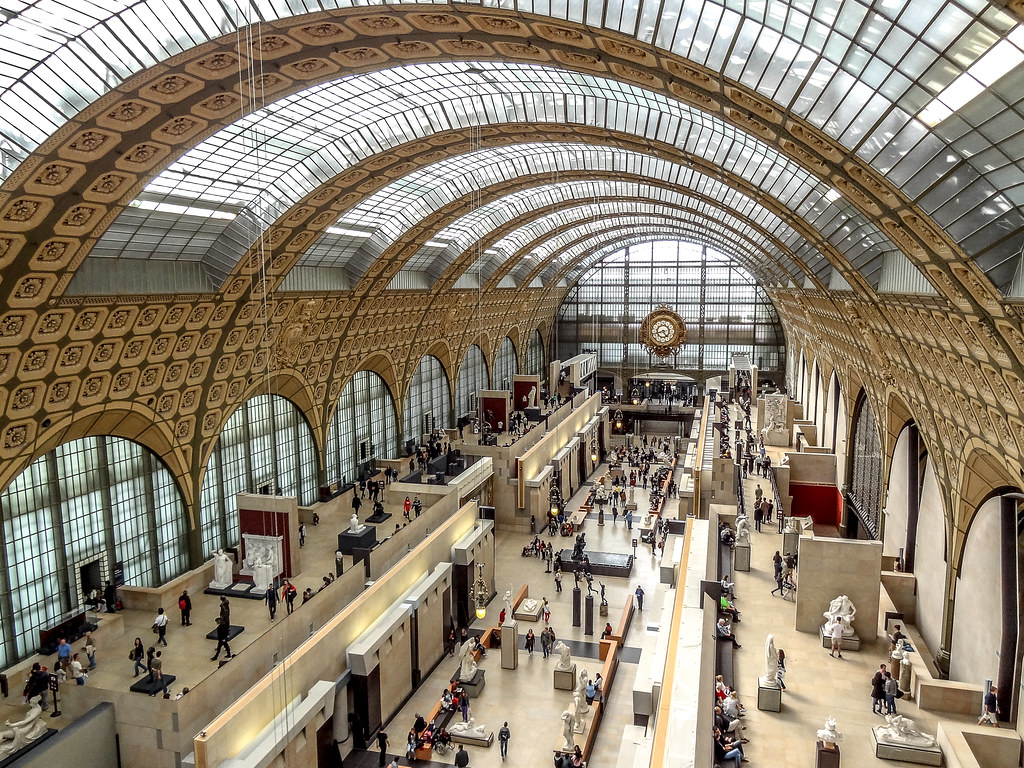
The Museum is located in an ancient railway station that was opened in time for the World’s Fair in Paris in 1900. Until 1939, the Gare d’Orsay (Orsay Station) had a very high usage as it was one of the city’s terminuses. After World War II, the station was no longer used, and in 1960, plans had been made to tear it down. Nonetheless, in 1977, it was decided to convert the railway station into a museum, which would open years later, in 1986. Visitors can still appreciate the charming railway station building as it was when it was opened in 1900.
The Exhibitions
The Musée d’Orsay features Impressionist and Post-Impressionist paintings and a vast collection of sculptures, decorative arts, and architectural elements. In the central part of the ground floor of the Museum, there is a collection of striking sculptures, and on both sides of the building, paintings dating from 1848 to 1870. On the top floor are the works of art belonging to one of the most significant periods in the Art world, between 1874 and 1886, including paintings by Renoir, Cézanne, Gauguin, and Monet. On this floor, visitors will see certain decorative elements and a beautifully decorated banquet hall.
Great Surroundings to Enjoy a Bit of Art
Compared to other enormous and complicated museums, such as the Louvre, the Musée d’Orsay is very enjoyable to discover. It houses a complete Impressionist and Post-Impressionist art collection, and its location makes it one of the top museums in Paris.
Musée de l’Orangerie
The Musée de l’Orangerie accommodates impressive works of art from the 1930s to the 1950s. It is housed in the Orangery of the Palais des Tuileries (Tuileries Palace), which sits on the banks of the River Seine.
The Building
Housed in a magnificent building constructed in 1853 as an orangery, the Musée de l’Orangerie (Orangerie Museum) features an impressive collection of Impressionist paintings, including masterpieces by Monet.
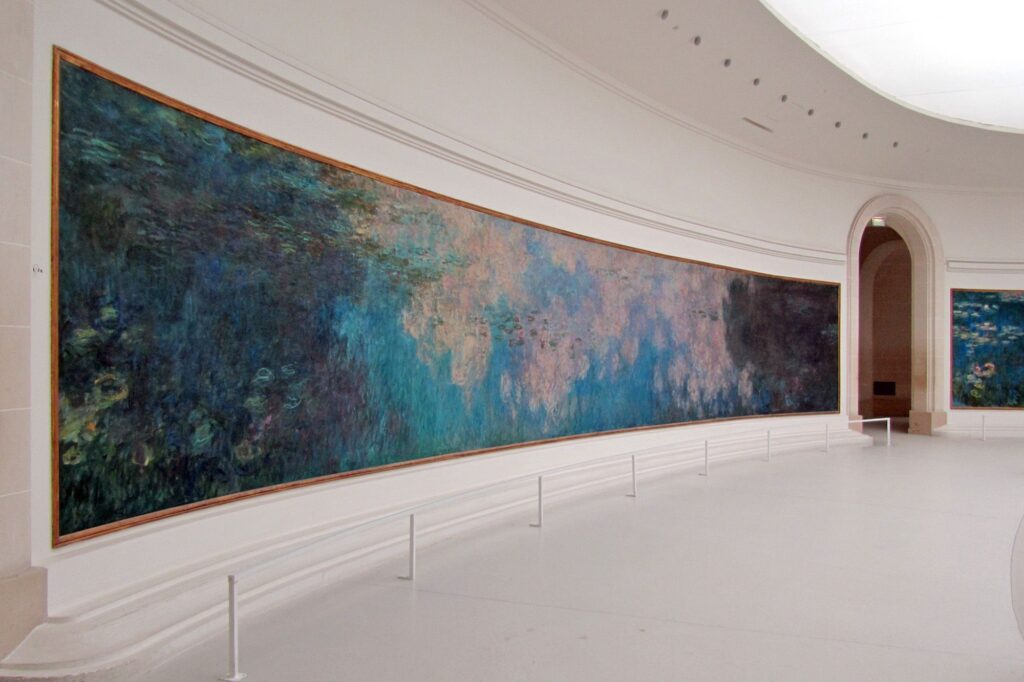
Exhibitions
The museum’s most famous halls are where Monet’s Water Lilies oil paintings are found. The artist gave precise instructions on how the paintings had to be hung, giving the impression that these enormous murals come alive when you walk into the oval halls. L’Orangerie also contains works by renowned artists such as Cézanne, Renoir, Picasso, Rousseau, and Matisse.
Small but Charming
In our opinion, the Musée de l’Orangerie is one of the best art museums along with the Musée d’Orsay. The collection is small but fascinating, and the building is magnificent. Visitors won’t be disappointed.
Centre Pompidou
It resembles museums like the MoMA in New York City or the Tate Modern in London. Opened in 1977 in one of Paris’s oldest neighborhoods, the Centre Pompidou was a pioneering contemporary architectural masterpiece—the brightly colored tubes on the building’s façade contrast with the grey construction. Apart from the Musée National d’Art Moderne (National Museum of Modern Art), the Pompidou houses a Public Information Library and a music and acoustic research center.
The Building
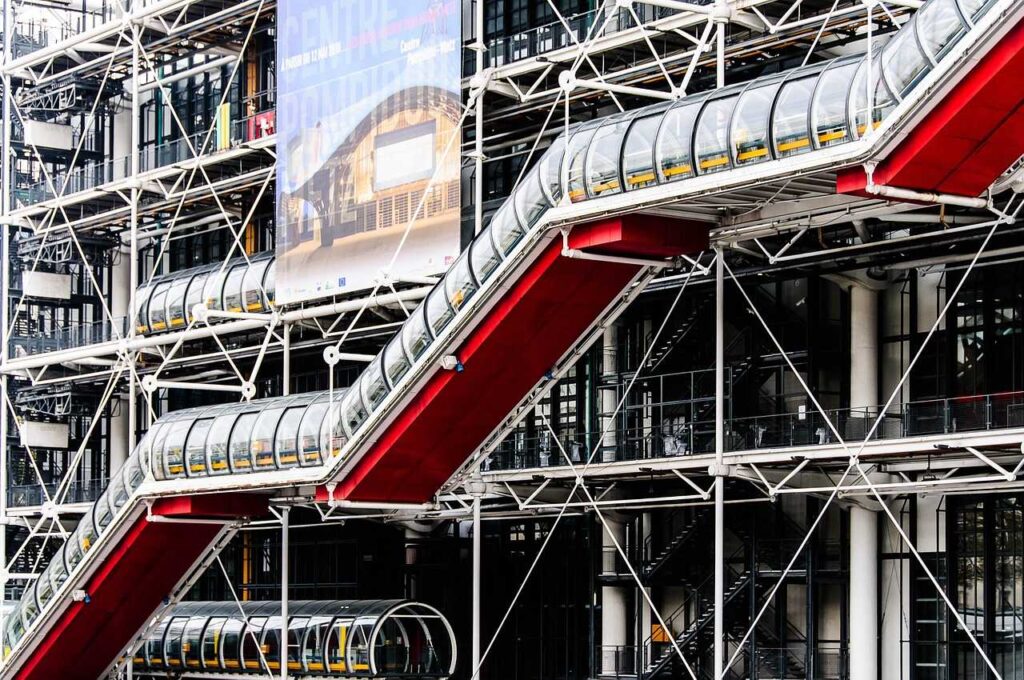
The Centre Pompidou building is one of the most extravagant in Paris, thanks to the tubes, lifts, air ducts, and brightly colored escalators found on the exterior of the construction. Its façade is so unique that we recommend visiting the museum even for those not fans of contemporary and modern art. The building is situated in Paris’s quatorzième arrondissement (fourth district). It is also home to other beautiful buildings like the Paris City Hall.
Exhibitions
The building has six floors, each measuring 7,500 square meters. The permanent collections of the Musée National d’Art Moderne can be found on the fourth and fifth floors. The fifth floor is entirely dedicated to Modern Art from the beginning of the twentieth century up until 1960 and features gems by Matisse, Picasso, Kandinsky, and Miró. On the fourth floor, visitors will find contemporary works of art from 1960 to the present day, with a special focus on minimalist and conceptual art.
Musée Rodin
Rodin donated his work and the artwork he had collected throughout his life to be shown in the Hotel Biron, where he had lived since 1908. The artwork consists of 6,500 marble, bronze, terracotta, and plaster sculptures and some 10,000 drawings, including lithographs, watercolors, and engravings. In addition to Rodin’s work, the museum also contains artwork collected by the sculptor, which includes 1,700 paintings, nearly 7,000 photographs, and over 6,400 sculptures and ancient objects.
The Building
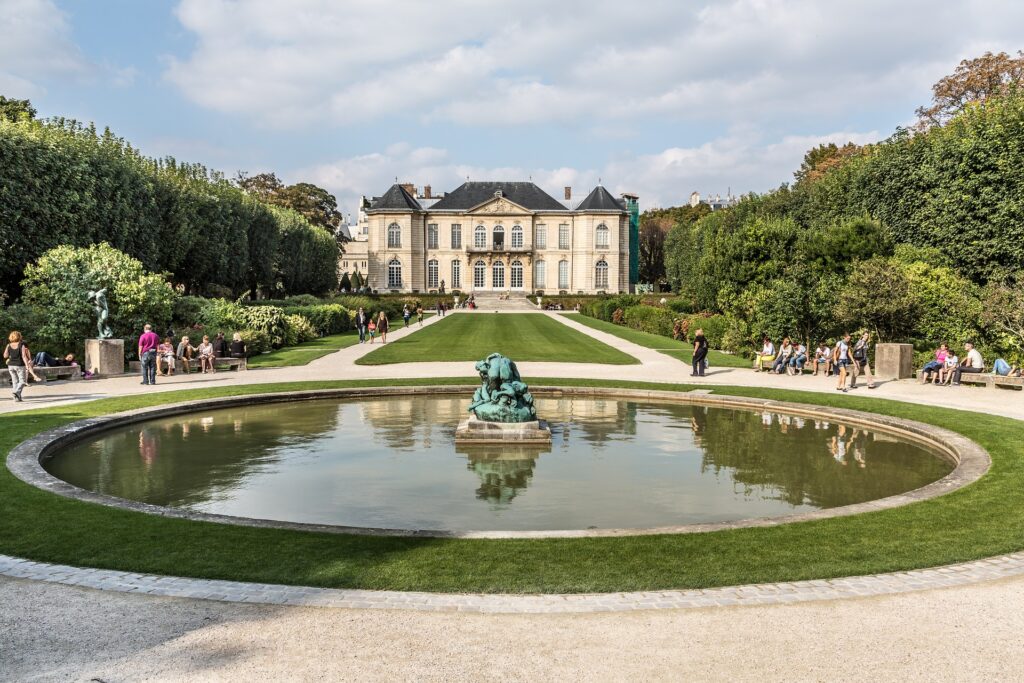
At the junction of the Rue de Varenne and the Boulevard des Invalides, the Hotel Biron can be found. This magnificent example of Parisian rocaille architecture was built in 1727 by the architect Jean Aubert and stands amidst the delightful surroundings of a vast garden. It takes its name from the Duke of Biron, who became a distinguished military leader. He bought the mansion in 1753. Previously, it belonged to Louise Bénédicte de Bourbon, the beautiful daughter-in-law of Louis XIV. From the late 18th century, the house passed through various hands, becoming multiple times the papal legate’s seat, the Russian ambassador’s official residence, and a boarding school for girls. Stripped and falling into disrepair, the place was rented by Auguste Rodin and became his studio. Other great artists who spent time at the Hotel Biron during this period included Jean Cocteau and Henri Matisse.
In the early 20th century, the government acquired mansions. Rodin planned to make a legacy of his collections to the state, with the proviso that the Hotel Biron would become a permanent museum of his work. Sadly, the master sculptor died in 1917, two years before his dream became a reality.
The Rodin Museum’s garden covers nearly three hectares, and various Rodin sculptures can be found throughout its verdant expanse. Situated in the heart of Paris, it forms a green haven, providing the ideal ambiance for a pleasant stroll. Dating back to when the mansion was a boarding school for girls, there is a charming 19th-century chapel on the grounds. Restored in 2005, this building now accommodates a fine exhibition hall, an auditorium, and administration offices.
Exhibitions
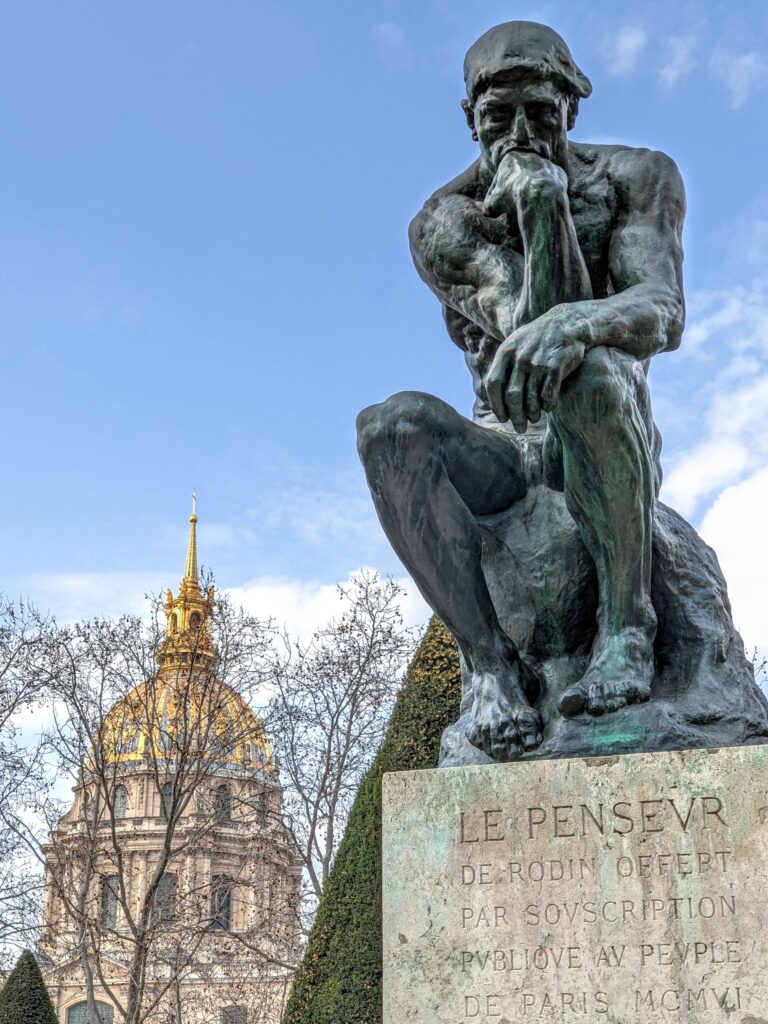
The 3-hectare garden is one of the most popular parts of the museum. Here, visitors will find some of the artist’s most famous sculptures, such as The Gates of Hell, Balzac, The Thinker, and Bourgeois de Calais, all surrounded by a charming landscape. The park is lovely in spring, and many Parisians and tourists buy admission tickets to see the Sculpture Garden without visiting the mansion. Visitors will find more of the sculptors’ work inside the Biron Hotel, such as the emblematic marble sculptor of The Kiss. Visitors will also have the chance to see other artist’s work since one of the halls of the museum is dedicated to Camille Claudel’s work, the artist’s lover, student, and collaborator.










